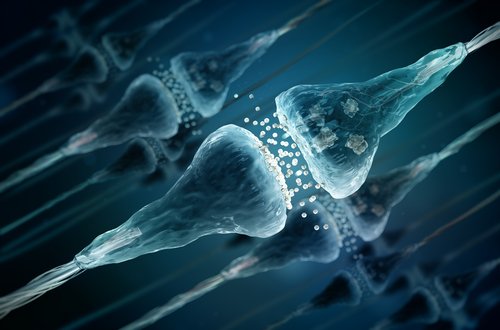Columbia University Researchers Record Action of Receptor Linked to Neurodegenerative Diseases
Written by |

The neurotransmitter glutamate triggers most brain signals by activating proteins on the surface of neurons called glutamate receptors.
Columbia University Medical Center researchers have taken the first 3D images of the AMPA-subtype glutamate receptors involved in several brain activities, including memory and learning.
By increasing scientists’ understanding of how the receptors work, the images could offer insight into the role that faulty receptors play in the development of neurodegenerative disorders such as multiple sclerosis, Alzheimer’s, and Parkinson’s. And that insight could lead to therapies.
“With our new findings, we can now, for the first time, visualize how the neurotransmitter glutamate opens glutamate receptor ion channels,” Dr. Alexander Sobolevsky, an associate professor of biochemistry and molecular biophysics at Columbia, said in a news release.
“This is the fundamental process that directly affects learning and memory, and finding its structural determinants has been the primary goal of molecular neuroscience since the ‘90s,” added Sobolevsky, the senior author of the study.
The research, titled “Channel opening and gating mechanism in AMPA-subtype glutamate receptors,” was published in Nature.
For the brain to work properly, neurons need to communicate with each other. To do that, they use neurotransmitters, small compounds that pass from one cell to a receptor on another cell. Glutamate is the neurotransmitter involved in many of these communications, and glutamate receptors are the structures that gather up many of the signals.
Several types of glutamate receptors participate in cognitive functions. AMPA receptors – a subgroup of glutamate receptors – are known for their fast activity, opening and closing in less than a millisecond. Because they work so fast, they are involved in rapid brain responses, such as rapid perception and reaction to the surrounding environment.
For years, researchers have tried to understand how AMPA receptors work. In previous studies, Sobolevsky’s team learned how the receptors regulated both the speed and strength of cell communications.
In the recent study, the researchers used advanced imaging techniques developed by Dr. Joachim Frank to record the actions of the AMPA receptors. Frank, a professor of biochemistry and molecular biophysics, and biological sciences, was a co-author of the study.
The images showed that AMPA receptors open in the presence of glutamate or a similar signaling compound. The mechanism can be compared to a camera’s iris, or aperture. The signaling particles pass through the opening, triggering electrical signals necessary for brain activity.
“These new fundamental discoveries have implications for our understanding of neurotransmission by glutamate, our brain’s major neurotransmitter,” said Edward C. Twomey, a Ph.D. candidate who was the first author of the study. “Understanding these processes will impact future studies on glutamate receptor signaling in neurodegenerative diseases as well as drug design.”

An animation showing how the AMPA receptor channel opens and closes. Credit: Sobolevsky lab/Columbia University Medical Center.





